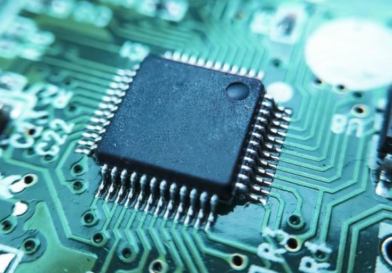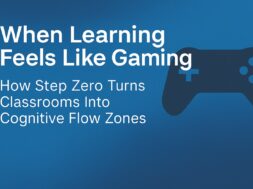Welcome to the Future of Learning!
We can't keep on teaching as we did the past 100 years.
We at Marvelous Minds understand that today’s learners—especially Gen Z and Alpha—operate differently. In a world where technology is second nature, their brains function much like highly efficient microchips, processing and synthesizing information at lightning speed. This isn’t just learning; it’s cognitive engineering.
The comparison between a computer microchip and the "mothership" of all thinking draws a compelling analogy between how artificial systems process information and how the human mind or cognitive frameworks facilitate thinking.
Microchip Functionality:
- The microchip, often referred to as the central processing unit (CPU) or simply a chip, plays a crucial role in a computer as the "brain" of the system. Here's a breakdown of its key functions:
- Processing Data: The microchip executes instructions from programs and applications by processing data. It performs calculations, logical operations, and manages the flow of information throughout the computer.
- Control and Coordination: The microchip controls all the other components of the computer, including memory, storage, and input/output devices. It sends and receives signals to ensure that everything works together smoothly.
- Executing Instructions: Microchips read and execute millions of instructions per second, allowing software to perform tasks like running applications, browsing the internet, or playing videos.
- Memory Management: It manages data flow between the CPU and memory (RAM), optimizing performance by storing and retrieving data quickly as needed for processing tasks.
- Parallel Processing: Modern microchips can handle multiple tasks simultaneously, known as parallel processing, which improves efficiency and allows the computer to perform complex operations faster.
- Decision-Making: The microchip processes logical decisions (like if-then scenarios) that guide how software operates, impacting everything from simple functions to complex algorithms.
- In essence, the microchip is the core component that drives the functionality of a computer, enabling it to perform tasks efficiently and respond to user commands.
Mothership of All Thinking:
- Central Cognitive Framework: The "mothership" refers to the overarching cognitive processes and thinking tools that guide how humans think, learn, and solve problems. It encompasses various thinking strategies, including surface and deep thinking, and provides a structured approach to compare, contrast, analyze, and synthesize information.
- Integration of Thoughts: Just like a microchip integrates data, the mothership integrates various thoughts and ideas. It helps manage the flow of cognitive processes, ensuring that different types of thinking (analytical, creative, critical) are orchestrated effectively.
- Facilitating Connections: It enables the brain to make connections between disparate ideas, much like how a microchip connects different functions of a computer. The mothership promotes synergy between different thought processes, enhancing problem-solving and decision-making capabilities.
Relational Functionality:
- Processing Units: Both the microchip and the mothership act as processing units—one for data and the other for thoughts. They break down complex inputs into simpler, actionable steps.
- Efficiency and Optimization: Both systems are designed to maximize efficiency. Microchips aim to minimize computational lag, while the mothership optimizes cognitive load by guiding thinking in structured, meaningful ways.
- Connectivity: Both rely on connectivity. A microchip’s circuits connect various hardware components, while the mothership connects different thought patterns, allowing for comprehensive understanding and innovative thinking.
- Execution of Complex Tasks: A microchip enables a computer to execute complex tasks by managing data flow and executing commands. Similarly, the mothership helps the mind execute complex cognitive tasks by organizing thoughts and utilizing thinking tools effectively.
In essence, both the microchip and the mothership serve as central processing entities—one for electronic data and the other for cognitive processes. They enable the flow, integration, and optimization of information, making complex operations manageable and purposeful.
Our Approach: Activating Your Students' Thinking Microchip
Just like the microchip is the powerhouse behind all technological advances, your student’s brain is a thinking microchip—capable of immense processing power, creativity, and adaptability. Our educators don’t just teach—they curate, guide, and optimize how this cognitive "microchip" processes information.
- Processing Real-time Information: With endless access to knowledge at their fingertips, your students ’s brain is naturally wired for discovery. Our role is to curate these experiences, guiding learners through syllabus themes and real-world problems, so their thinking microchip operates efficiently.
- Custom Learning Experiences: EveryStudent’s cognitive microchip processes differently. That’s why we tailor learning to each student’s strengths, ensuring they thrive in their own way—whether it’s creative problem-solving, critical thinking, or collaborative innovation.
These insights paved the way to the DARE2TEACH DIFFERENTLY Summit at the Eduvos University, Pretoria, South Africa on 26 October 2024.
Click here for more information.





